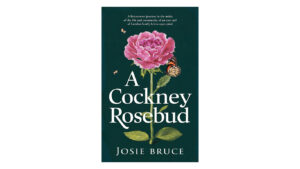

On Saturday, at 6 p.m., the pioneering Manhattan art gallery Metro Pictures will close its doors, after 41 years. Like New York City itself, the New York art world in December 1980 was clawing its way out of the brutal 1970s recession and starving for new ideas when Janelle Reiring (an assistant to the art dealer Leo Castelli), and Helene Winer (a curator and director of the alternative-art venue Artists Space) opened in SoHo, where their singularly forged vision helped define a movement ultimately known as the Pictures Generation.
They gave its champions — Cindy Sherman, Robert Longo, Richard Prince, Louise Lawler, Sherrie Levine and Jack Goldstein, who were photography-based and appropriation-minded, their first or early shows in New York. Sherman, Winer’s former assistant, created a body of work called the “Untitled Film Stills” in which the artist photographed herself as eerily familiar movie stereotypes. It would rocket her to art stardom.
Reiring and Winer advocated an acutely media-focused perspective that developed out of Conceptual Art and used a new kind of artistic tactic: appropriation — pinching images and ideas and using photography to re-review movies, advertising. (The name itself — Metro Pictures — was a bit of appropriation. )
It was also a gauntlet thrown down before the pluralist sprawl of 1970s art, with no dominant movement. From the very start it represented a position with a coherent roster of artists whose work was theorized by critics like Douglas Crimp and Craig Owens. It also had a loyal opposition, a rival movement that emerged at the same time: the explosion of large, colorful, messy painting that was called Neo-Expressionism, exemplified by Julian Schnabel, that was an answer to the visually severe movements of Minimalism and Conceptual Art. Expressionism was seen as big on feelings but low on ideas. Metro Pictures’ vision quickly expanded, especially after it moved to Chelsea in 1997, but even the work of recent additions like the French multimedia artist Camille Henrot and the American artist-geographer Trevor Paglen is indebted to Conceptualism.
On the eve of their final exhibition of paintings and video work by the Polish artist Paulina Olowska, Winer and Reiring talked with Roberta Smith and David Colman about the highs of running a gallery and their reasons for leaving. The following excerpts have been edited and condensed.
DAVID COLMAN When did you meet and how?
JANELLE REIRING Junior high school.
HELENE WINER We both grew up in Westchester, by the Los Angeles airport. Airport Junior High School.
REIRING The high school was divided into its cliques. We were in the surfer one. And we always stayed in touch as we got older. I went to Berkeley. I was an English major, but I took art history classes and a professor [Alfred Frankenstein] who was a critic for the San Francisco Chronicle, showed us all really contemporary stuff that I was really excited about.
WINER I went to U.S.C. I studied art history. My first job was at the Los Angeles County Museum. I was the tour guide driver and met a lot of artists, and found out L.A. had a real art scene. Then I went to London and worked at the Whitechapel Art Gallery.
REIRING I ended up in New York and heard there was an opening at Leo Castelli on West Broadway, and I applied and got it. My good friend Louise Lawler — who would be at Metro from the beginning — was already working there at the front desk, and it was just her, me, and a part-time guy. Louise was always an artist. She was always photographing other artwork but throughout her career I think the artists who inspired her the most, like Andy Warhol and Frank Stella, are still Castelli artists.
SMITH She highlighted their work as expensive art objects but also used their allure. Helene, you landed at Artist’s Space in 1975.
COLMAN I never realized that Cindy Sherman worked for you there. How did that happen?
WINER Robert [Longo] and Cindy were a couple and they lived in Buffalo. Cindy got an N.E.A. grant, two or three thousand dollars, and with that fortune they moved here in 1977, and then Robert came in — this is typical Robert. I had already almost hired somebody for this receptionist job, and he said “Cindy is so depressed and unhappy and crying all the time, she’s gotten a job at Macy’s.” That’s how dramatic he was — I had to hire her. So, I said, “Oh, OK.” And she was super organized.
COLMAN And how was her typing?
WINER I’m sure it was very good; she does everything just perfectly. I knew her artwork already, but she started bringing in the “Film Stills” in a notebook for us to look at, like 8-by-10s. She was planning to print them much larger. I just remember thinking. “Oh, my God.” They were so good.
SMITH Their smallness was one of their merits. So that was one of your great moments, seeing her work?
WINER Yes — it was mature, brilliant, complicated work. She was always a little shyish and quiet then, not into talking about her ideas and things.
SMITH It was very exciting when Metro opened. You had this amazingly lean, intimidating roster of artists. Their work was very cool, cerebral, sometimes fairly obscure. You didn’t always know if there was a there there.
Then there was October, which was almost like your house organ [a critical theory journal, edited by Rosalind Krauss, Annette Michelson and Douglas Crimp].
WINER It really gave us gravitas because it’s not like these artists were towering intellectuals.
REIRING What was interesting was how quickly the critics’ theories [about Pictures and the dominance of the camera] diverged from what the artists were actually doing. Cindy’s film stills fit their theories perfectly but they didn’t write about what she did later, which drew as much from old masters to clowns as it did from the media.
SMITH So Helene, by the time you got to Metro Pictures, you’d been out there doing shows. You had a very distinct point of view: You thought painting was dead.
WINER I for sure thought that. But then when we opened the gallery I was thrilled to find artists who painted — but they weren’t all about paint.
SMITH And within the first few years of the gallery you were showing painters like Rene Daniels and Walter Robinson, widening your vision.
WINER And then Martin Kippenberger. And also Jack Goldstein did painting, suddenly, once David Salle did painting.
REIRING I remember the huge effort we put in making sure they were seen as artists, not just photographers. We presented their work to collectors as being on a par with paintings. When MoMA bought that complete edition of Cindy’s “Untitled Film Stills,” we made sure it was a joint purchase between the photo department and the painting and sculpture department.
SMITH You were also early in showing women and artists of color. You showed Fred Wilson in 1991.
WINER I had asked David Hammons to be in the gallery. I flew to Rome, and he rejected me.
REIRING When I first went to work for Castelli, the last thing I wanted to do was open a gallery. Leo had these successful artists that could support the younger ones. It was the late 1970s and people weren’t buying art. Every summer Leo would take out a loan to just to get through the summer. And with Lichtenstein and Johns it was one painting every two years. How do you support that? But then things started changing. There were new young collectors and they were interested in new art.
WINER We just wanted to show good art and our view of good art happened to be a little narrower, and then it expanded. That was what was exciting — artists themselves would be finding new, very unexplored ways of working, post-Conceptual. And we used ‘pictures’ in our name because it includes photographs, paintings, snapshots, mental images, everything.
SMITH It was very cool that you appropriated the name of a business and a power source outside the art world, and one that had been discarded, since Metro Pictures became MGM.
REIRING We used “Metro” because it’s such a universal name. There was Metro Plumbing, Metro this and that.
SMITH So, Pictures Generation you don’t like.
WINER The gallery definitely had a media-oriented point of view, it was a cultural critique, but we wouldn’t have used the word critique. The Pictures Generation label came much, much later [with a show at the Metropolitan Museum of Art in 2007-08].
COLMAN How did you come in contact with Mike Kelley, a big part of Metro’s success story.
WINER I met him when I was organizing a show of Cal Arts graduates in the early ’80s. It was overwhelming, between all the drawings and sculptures he’d made and the things he’d accumulated, from stuffed animals to comic books to porn. But beyond his productivity, what really blew me away was how he talked about why he did what he did, with a stunning degree of intense intelligence.
SMITH You showed him in ’82. It was through him that you got Jim Shaw.
REIRING And John Miller, and Tony Oursler much later.
SMITH My question is about David Salle, who you showed at Artist Space. I thought he made sense at Metro because he used appropriation several ways. But he showed with Mary Boone. Had he sort of gone over to the dark side, by which I mean Schnabel and the Neo-Expressionists?
WINER He had a view of himself as an artist that was more aligned with a kind of establishment. Not stylistically, but the establishment structure and attention.
SMITH You’re quoted in the Pictures Generation catalog saying, I found Expressionism embarrassing. Do you still feel that way?
WINER Yes, I do. In all respects, nothing to do with art, I do feel people don’t need to constantly express themselves.
SMITH There were times I felt that the gallery jumped the track. I remember being outraged that you showed Frank Gehry’s fish lamps in 1984.
REIRING Oh, I loved that show.
SMITH I knew you would say something like that. I loved another instance of track-jumping but it was more consistent with your anti-painting position: Jim Shaw had a large collection of thrift store paintings that you showed in the gallery in 1991. People went nuts.
REIRING You’re thinking of us as too programmatic.
SMITH To jump to another subject, I remember when Mike Kelley left you to go to Gagosian in 2004. It was a turning point. It suddenly became clear that the larger galleries were going to be poaching the mid-sized.
REIRING People do not understand what happened with Mike. He went with Gagosian because he wanted to be Jeff Koons, and he went there and he did not become Jeff Koons. And that was why he was unhappy.
WINER Everyone knew he was a wonderful artist, but he didn’t have this kind of godlike status in the larger world. He never would have it because his was more of a thinking kind of art.
COLMAN There was a point in the mid-00s when it really felt like the art world was turning into something else. John Currin left Andrea Rosen, Richard Prince (who had left Metro early, after two solos) left Gladstone and Thomas Demand left 303. All ended up at Gagosian, at least for a while.
REIRING It became purely about the space and money.
WINER And then we knew that we weren’t striving to provide that, or even facilitate it — I didn’t really want to have that relationship with artists, like financing outside projects.
COLMAN Did your artists feel overshadowed by Cindy Sherman’s success?
REIRING We had a rude awakening about it right after we opened because all of our artists were having their first shows — we were selling everything, they were getting written about. Then a year later, we had eight artists in Documenta 7 [1982]. But for our artists not in it, it was our fault. A lot of artists left.
WINER One by one.
REIRING Early on, Richard Prince was living with Cindy and there were no cellphones. So we’d have to call, because we had all these demands for Cindy, and Richard would answer the phone. He knew exactly what was coming.
WINER But that’s quite different from later. In the ’90s, big artists began having much higher expectations about what the gallery should provide and guarantee.
REIRING The biggest change started after 9/11, which more or less prevented a lot of art people and collectors from coming here that fall, and then the following December [2002] the first Miami Basel fair opened and everyone went to that. New York was no longer the center of the art world. We barely took on any New York-based artists after that. But the pandemic really gave us time to think. Being responsible for 40 people, for their well-being, plus your employees — you think, “Do I really want to keep doing this?” No.
WINER You are basically consumed by what the artists want from you. They’ve all been wonderful about our closing, but in fact they want and need us to perform for them and if that can’t happen we’re blamed just like you blame your parents for all your failures. You preferred the other kid.
SMITH Something happens to you as you grow older. You have more doubt and you find out that your taste or your theory betray you.
WINER I have lots of regrets. There were tons of things I actively rejected. Then later, especially when you see good retrospectives of an artist, you think, This is wonderful.
REIRING I just had that experience with the Nikki de Saint Phalle show at MoMA PS 1. I always kind of dismissed her. Oh, it’s cute and clever — and I saw the show. I was totally knocked out.



